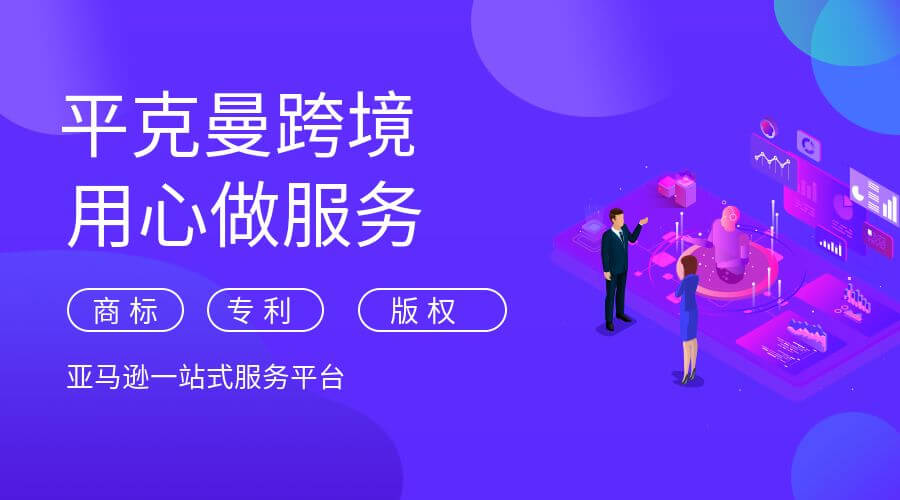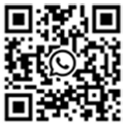How to prepare and deal with patent infringement?
\u0026 nbsp;
\u0026 nbsp;
Now companies pay more and more attention to patents. Many companies not only actively apply and lay out patents, but also strictly monitor and crack down on their patent infringement behavior. Therefore, patent infringement lawsuits occur frequently.
\u0026 nbsp;
Many enterprises, especially some small and medium -sized enterprises, will be confused when receiving a patent infringement lawsuit, and do not know how to deal with and deal with it. In fact, receiving a patent infringement lawsuit does not mean that you will be punished for this. If it is handled properly, it is still possible to win.
\u0026 nbsp;
Today, let's talk about the preparation of patent infringement lawsuits.


\u0026 nbsp;
I. Plastichore \u0026 mdash; \u0026 mdash; Preparation before the lawsuit 123] \u0026 nbsp;
1. Patent monitoring of competitors \u0026 nbsp;
The main competitors in the same field should establish regular patent monitoring to understand the latest trends of competitors 'patent applications, evaluate the correlation between these patent applications or patents and their own products or technology, and adjust their own R \u0026 AMP; D direction according to the competitors' litigation habits And product promotion. If the patent of competitors involves its own key products, it is necessary to evaluate the risk of infringement.
\u0026 nbsp;
\u0026 nbsp;
If the monitored patent will affect the production or sales of key products of the enterprise, and there is no low -cost way to bypass or reduce the risk of infringement risks Enterprises should consider asking the patent invalidal request to clear the obstacles for possible obstacles. If the patent influences is not just an enterprise, but an industry, it should be considered to jointly propose a request for invalid patents with other companies in the industry. Chinese companies have many successful cases in this regard, and combined with domestic industries can play a role in competing for large foreign companies.
\u0026 nbsp;
As for whether to wait until the other party filed a patent lawsuit, and then announced that the patent of the other party was invalid, the company should make a choice according to the specific situation. It is worth noting that once the other party filed a patent lawsuit, it lost the opportunity to be the defendant. At the same time, it was necessary to start an invalid process, which often worked. And whether the invalid program can suspend the lawsuit is completely determined by the court. In practice, after the defendant filed an invalid procedure, the court did not stop the trial, and there were many judgments directly. It is still unknown whether the invalid program can play a role in suppressing litigation. Enterprises must consider the possibility of invalid procedures that are still in progress and the infringement judgment that has been revoked, and enterprises may face legal liability for infringement.
\u0026 nbsp;
\u0026 nbsp;
If an enterprise decides that the procedure of invalidation of the monitoring patent is not launched, the existing technical evidence shall be collected for debate. Existing technical evidence includes: patent and non -patented documents, evidence that is publicly used and sold first. It is worth noting that, in view of the court's requirements for the form and integrity of the evidence, it is difficult to obtain the evidence used or sold (the longer the time before the patent application, the more difficult it is obtained). Enterprises should prepare early to prevent passive positions when they are prosecuted.
\u0026 nbsp;
In addition to the evidence of previous use or sales, enterprises should establish a complete file system as much as possible. For example, companies have R \u0026 AMP; D activities, and they must establish a complete R \u0026 AMP; D file, including design sketches, drawings, product prototypes, etc. When an enterprise has new products or new methods to launch, it should retain evidence of manufacturing and sale of the product or using the method. These evidence will become a strong evidence in patent infringement lawsuits, supporting enterprises' preferential claims for preferential rights or existing technologies.
\u0026 nbsp;
\u0026 nbsp;
After monitoring the patent of competitors, the company sometimes adjusts the technical solution to avoid infringement. Those who meet the conditions for patent application this time shall apply for patent protection in a timely manner. In patent applications, enterprises should pay special attention to the role of practical new patents. This utility model has low creative requirements for technical solutions, low application costs, fast authorization, and not easy to fail. It is very suitable for companies with the disadvantages of R \u0026 AMP; D resources to apply for those \u0026 ldquo; small innovation \u0026 rdquo; Multinational companies often do not pay enough attention to these \u0026 ldquo; small innovation \u0026 rdquo; they only apply for some basic patents to leave a lot of room for others to apply for a belonging patent in the future. SMEs should pay attention to useThese spaces, applying for a subordinate patent to expand their patent chips, strive for reconciliation or even cross -licensing, and turn the defendant into plaintiffs in front of the patent lawsuit.
\u0026 nbsp;
1. Promoting no infringement lawsuit
\u0026 nbsp; After receiving the other party's lawyer's letter The subject qualifications, rights status, and whether they have infringement to verify them. Evaluate the possibility of the other party's prosecution from the lawyer's letter or the meeting with the lawyer, and the impact of the other party's legal request on their own production and operation, possible business solutions, potential lawsuits, and the impact of the court's jurisdiction on the results of the lawsuit. \u0026 nbsp;
Considering the above factors, if the company believes that the legal request of the other party will seriously affect its own production and operation, and it is inclined to jurisdiction over the local courts for cases. Enterprises shall promptly file a litigation without infringement in order to occupy the opportunity. It is worth noting that the local courts have different acceptance conditions for patent infringement. For example, whether the lawyer's letter constitutes a substantial warning, whether the plaintiff has urged the other party to exercise the patent right, but the other party has not exercised within a certain period of time. Enterprises must follow the conditions of the local courts and follow the necessary procedures in order to successfully file a non -infringement lawsuit.
\u0026 nbsp;
.
\u0026 nbsp; Pre -litigation relief procedure includes pre -litigation ban, pre -litigation evidence preservation and pre -litigation property preservation. These temporary relief measures may have a very serious impact on the production and operation of the request. Since the court does not necessarily hear the respondent's opinions when approved temporary relief measures, there is no effective way to prevent such measures from occurring. What the enterprise can do is evaluate the possibility and prepare. Enterprises should consult a lawyer's opinion, under what circumstances and reason can reasonably and legally control the scope of the search and seizure; second, the enterprise should inform the internal senior managers to prevent caught off guard and seriously affect the normal business activities of the enterprise. \u0026 nbsp;
Due to the complexity of patent litigation, it is time -consumingAffection. The ultimate goal of patent litigation is the division of markets and interests. When a company receives a litigation threat, it can actively provide business solutions, purchase patents or request licenses. Considering the high cost of patent litigation, most patent owners will open the door of negotiations. \u0026 nbsp;
1. After finishing the procedures for the time \u0026 nbsp;
After receiving the prosecution, the court was determined Evidence time and trial time. However, as the defendant, you can use all legal procedures to fight for more time to prepare for the response.
\u0026 nbsp;
(1) jurisdiction objection. \u0026 nbsp;
The defendant had the right to submit jurisdiction objections to the court during the defense period. After the court made a jurisdictional objection ruling, the defendant could also appeal. After the people's court rejected the ruling of the parties' jurisdiction, it shall re -designate the proof period of not less than 30 days in accordance with the provisions of the evidence. Therefore, the jurisdiction of the jurisdiction of the jurisdiction has played a role in extending the proof and delaying the opening of the trial, so as to win the time for the defendant.
\u0026 nbsp;
(2) proposes a request for invalid patent announcement. If it is a practical new type or appearance \u0026 nbsp;
In the appearance design patent lawsuit, the defendant submitted a request for invalidation of patent during the defense period. Litigation; even if the invention patent, although the judicial interpretation stipulates that the court shall not suspend the lawsuit, in practice, if the defendant proposes invalidation requests and submits evidence to the court to prove the validity of the patent, the court may decide to suspend the lawsuit, or even if the lawsuit does not stop the lawsuit The court can also postpone the judgment to maintain the same decision with the patent invalidation and maintain the stability of the judgment. In some cases, invalidation procedures can also limit the scope of the plaintiff's expansion of patent protection, which is conducive to the defendant's non -infringement defense. In order to maintain the effectiveness of patents, the plaintiff had to make a restrictive interpretation of the patent through quoting the existing technology, and these explanations will play an important role in patent infringement lawsuits, which will not only limit the plaintiff's scope of protection of patent interpretation in order to claim infringement, but also restrict the plaintiff. It will limit the possibility of the plaintiff's claim of equivalent infringement. \u0026 nbsp; 2. Comforts important customers
\u0026 nbsp;
In patent infringement lawsuits, customers are often anxious because of alleged use of infringement and anxiety. It is required to be charged with the possibility of infringement and promise to bear all legal responsibilities; or suspend orders to start seeing. This is the effect that the plaintiff hopes to achieve the lawsuit. Some plaintiff even wrote to the defendant's customers to inform them of potential legal responsibilities. At this time, most customers will worry about whether they will be implicated, and because they have been told that they can no longer be required to exempt their liability for compensation through legal channels. In the face of this situation, enterprises should take the initiative to contact important customers, hire lawyers to issue legal opinions on the infringement risks and responsibilities faced by customers, and make commitments to potential responsibilities to reduce the adverse effects of litigation on production and operation. \u0026 nbsp; 3. For malicious lawsuits, the wrong competition lawsuit is filed.
\u0026 nbsp;
If the plaintiff's remarks before and after the lawsuit are unfavorable to the infringer accused, the improper affects the important customers of the infringer, or the plaintiff, or the plaintiff Knowing that its patent rights are still invalidated, they still file a lawsuit that harms the legitimate rights and interests of others. The accused infringer may consider the abuse of the patent in addition to the abuse of the patent person to form improper competition. Improper competition lawsuits can curb the excessive speculation of patent rights on patent infringement lawsuits, and can conduct independent legal claims in a more favorable jurisdiction, providing possibilities for subsequent reconciliation. \u0026 nbsp; 4. Formulate infringement defense strategies.
\u0026 nbsp;
The first step is to define the scope of patent protection. The defendant shall use the restrictions made by patent censorship files and patent persons in the patent invalidation procedure, the defects in patent texts to restrict the scope of claims, and restrict the extension instructions of the patent person and the application of equivalent infringement. Prepare preparations. \u0026 nbsp; In the defense, the first consideration is not infringement and defense. Essence Do not infringement and defense should focus on the technical characteristics that are different or lack of patent claims, and explain that the technical characteristics are different or lack of the substantive differences of being accused of infringement technology and patent claims to prevent patent rights from making patent claims in order Covering the instructions of being accused of infringement or requesting applications is equivalent to the principle of infringement.
\u0026 nbsp;
If the defense may not be established, the existing technical defense should be actively prepared. The best place for existing technical evidence is to find a copy of existing technologies covering all characteristics of controlling infringement technology. If you can't find it, you can also try to submit a combination of existing technology and common sense, or even a combination of multiple existing technologies. However, the more existing technologies are cited, the lower the possibility of being accepted by the court. The more difficult it is to prove that the infringing technology accused of infringing technology and a certain existing technology.
\u0026 nbsp;
The defense of first use is generally placed. Due to its limited effect, even if it is established, the technology of the infringer in the future is limited to the original scope. However, the difficulty of proof of the first use right defense is less difficult than the existing technical defense. The charged infringer only needs to prove that it has been manufactured or used before the application day, and it does not need to prove that this manufacturing or use has led to the disclosure of the technology. In the first two defense strategies may not be established, in order to protect themselves, companies can adopt defense rights first.
\u0026 nbsp;
Of course, the defense reasons in specific cases are far more than the three types mentioned above. Enterprises can also defend the plaintiff's lawsuit, evidence defects, and timeliness of litigation. Because these defense is common in civil lawsuits, I will not repeat it here.
\u0026 nbsp;
5. Affordable to infringement liability.
\u0026 nbsp;
If the possibility of losing the case, the company's next consideration is the responsibility of the infringement liability. The main infringement liability includes: stop infringement and economic compensation. Stop infringement requires enterprises to stop production, sales and use of infringing products and methods. Enterprises should measure the value of products to enterprises. If it is a key product, you must be with the personnel and patent lawyers of R \u0026 Amp; D to find a solution to change some technical characteristics at the lowest cost and apply it. Economic compensation is the last link that the enterprise should strive for in the lawsuit. The patent law stipulates a clear order on the method of determining the amount of compensation. Enterprises should actively prove that the plaintiff's actual loss or its own infringement profit is significantly lower than the plaintiff's claim amount, so as to reduce the amount of compensation.  CHINESE
CHINESE ENGLISH
ENGLISH





